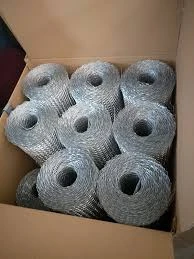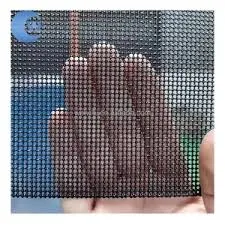-
+86 15030157877
-
sales@galvanizedmetalmesh.com
Jan . 15, 2025 03:34 Back to list
farm field fence
Field fence wire is integral to agricultural success and property management, providing a robust solution for boundary definition and livestock containment. Achieving optimal results demands knowledge of material types, installation techniques, and maintenance practices, ensuring a fence system that is not only durable but adaptable to varying environmental conditions.
Maintenance of field fence wire is a fundamental aspect of preserving its efficacy. Regular inspections for damage—caused by livestock or fallen trees—should be conducted at least bi-annually. Prompt repairs are vital; minor breaches can quickly result in larger issues. Use repair sleeves or splicing methods to address broken wires, maintaining the fence’s continuity and strength. Innovative developments in fencing technology now include the use of solar-powered electric fencing systems, which enhance traditional wire fences. These systems deter livestock from pushing against the boundaries without harming them, reducing wear on the fence itself. Combining solar-powered electric fencing with field fence wire maximizes security, utilizing energy-efficient methods that are particularly advantageous in remote areas. Environmental conditions greatly influence the choice of field fence wire. In acidic soil regions, selecting wire with a triple-galvanized coating or a high-tensile aluminum alternative prevents corrosion. Similarly, in areas with heavy snowfall, opting for a fence with a denser wire gauge and smaller aperture reduces snow load impact and animal stress during harsh weather periods. Sustainability in agricultural practices also extends to fencing. Recycled materials are increasingly used in fence wire production, contributing to an eco-friendly approach that maintains quality and strength. Evaluating a product's lifecycle environmental impact can aid in making informed decisions aligning with eco-conscious farming methods. Field fence wire represents more than just a barrier; it is a critical tool in sustainable land management. Selecting the appropriate wire type, installing it correctly, and maintaining it diligently ensures robustness, efficiency, and longevity, supporting both agricultural prosperity and environmental stewardship. Trusted by experts globally, excellent field fence wire systems are pivotal to the future of effective farming and property management.


Maintenance of field fence wire is a fundamental aspect of preserving its efficacy. Regular inspections for damage—caused by livestock or fallen trees—should be conducted at least bi-annually. Prompt repairs are vital; minor breaches can quickly result in larger issues. Use repair sleeves or splicing methods to address broken wires, maintaining the fence’s continuity and strength. Innovative developments in fencing technology now include the use of solar-powered electric fencing systems, which enhance traditional wire fences. These systems deter livestock from pushing against the boundaries without harming them, reducing wear on the fence itself. Combining solar-powered electric fencing with field fence wire maximizes security, utilizing energy-efficient methods that are particularly advantageous in remote areas. Environmental conditions greatly influence the choice of field fence wire. In acidic soil regions, selecting wire with a triple-galvanized coating or a high-tensile aluminum alternative prevents corrosion. Similarly, in areas with heavy snowfall, opting for a fence with a denser wire gauge and smaller aperture reduces snow load impact and animal stress during harsh weather periods. Sustainability in agricultural practices also extends to fencing. Recycled materials are increasingly used in fence wire production, contributing to an eco-friendly approach that maintains quality and strength. Evaluating a product's lifecycle environmental impact can aid in making informed decisions aligning with eco-conscious farming methods. Field fence wire represents more than just a barrier; it is a critical tool in sustainable land management. Selecting the appropriate wire type, installing it correctly, and maintaining it diligently ensures robustness, efficiency, and longevity, supporting both agricultural prosperity and environmental stewardship. Trusted by experts globally, excellent field fence wire systems are pivotal to the future of effective farming and property management.
Next:
Latest news
-
Smart AI Fence Solutions with GPT-4 Turbo | Secure & Fast
NewsAug.02,2025
-
Welded Gabion Solutions: Durable & AI-Enhanced Designs
NewsAug.01,2025
-
Premium Welded Gabion Mesh | Robust & Eco-Friendly
NewsJul.31,2025
-
Premium Eco-Friendly Roof Tiles | Affordable & Durable
NewsJul.31,2025
-
Premium Roof Tiles for Durable & Stylish Roofing Solutions
NewsJul.30,2025
-
High-Quality Roof Tiles for Durable & Stylish Roofing Solutions
NewsJul.29,2025



